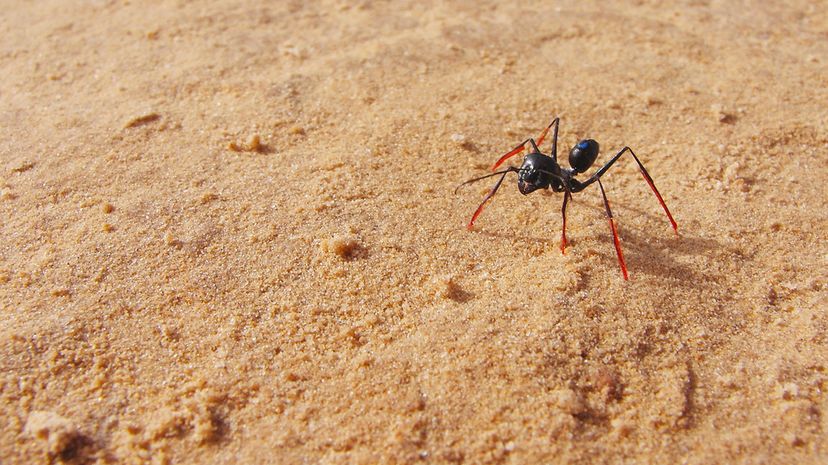
Ants on stilts! While that may seem like a sideshow for a flea circus, for scientists, it's become a real-world way to solve a mini-mystery.
Imagine an ant in the desert, leaving its nest and foraging for food among the shifting sands and soaring temperatures. The ant's path weaves and twists along the sandy terrain until it finds a morsel — and then it makes a beeline straight back to the nest. But how does it know where to go?
Advertisement
“Navigating back is very hard,” says Nick Bos, a University of Helsinki ant researcher. “The shifting sands keep wiping away all the chemical trails [the ants leave], so there's no way to navigate by chemicals.”
To make matters even more difficult, desert ants don't have the benefit of landmarks to lead them home. “Wood ants use the forest canopy for navigation, gauging the way the light falls through the canopy, which is not possible in a desert,” Bos says.

Even without the benefit of these navigational tools, a desert ant has the uncanny ability to calculate the most direct return route to its nest, no matter how far or circuitous its path. “It's pretty impressive, considering the way from the nest is chaotic and includes many turns,” Bos says.
In a 2006 study, a team of scientists from the University of Ulm in Germany and the University of Zurich in Switzerland decided to put ants to the test. They intercepted Saharan desert ants (Cataglyphis fortis) as they were making their way back to their nest, then used stiff pig hair to fashion Lilliputian stilts for their legs. Scientists then returned the ants to the ground and watched as the ants scurried back to their nest using their newly long legs. Without fail, the ants overshot their intended destination.

Scientists surmised that because the ants' legs now seemed longer with the stilts attached, walking the same number of steps took them farther than they intended. Could the ants be “counting” their strides?
To test this hypothesis, scientists partially amputated the legs of other desert ants, forcing them to take smaller steps, and then watched as they journeyed to their nest. As a result of having shorter legs, the ants seemed to perceive too early that they'd reached the place where their nest should be, when in fact, they still had a distance to go.
Scientists concluded the desert ants must have a built-in step integrator that gives them a sense of distance. While the ants aren't actually counting their steps, they seem to use this natural odometer to calculate how many steps they need to take to get home.
Advertisement
